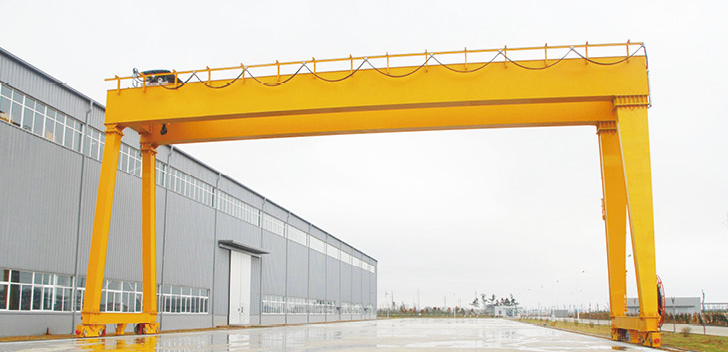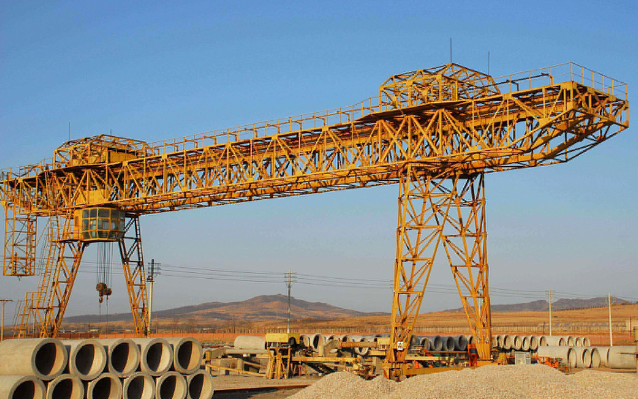With the rapid advancement of technology, the research, development, and innovation of crane products have undergone tremendous changes in the past few years. As crucial equipment supporting the operation of modern industrial systems, cranes have long transcended their traditional role as “lifting and handling tools” to become the core hub connecting and improving efficiency across the entire supply chain of construction, logistics, and manufacturing. In recent years, a series of cutting-edge innovations and new product releases have injected new vitality into the crane industry.
With the expansion of global infrastructure demand, rising demands for logistics efficiency, and the shift toward more flexible manufacturing, the crane industry has become a crucial indicator of a country’s equipment manufacturing capabilities. Its technological advancements not only directly impact the production efficiency of individual companies but also, at a macro level, contribute to industrial upgrading and the achievement of sustainable development goals across countries. From energy-saving breakthroughs in core hydraulic systems to AI-driven intelligent control, from the widespread use of environmentally friendly materials to the flexible adaptability of modular designs, cranes are bringing disruptive changes to multiple industries as “all-round equipment.”

Hydraulic system innovation: the core driving force
At this critical stage in the crane industry’s transition to high efficiency and low carbon, technological breakthroughs in hydraulic systems, the “heart” of equipment power transmission, are a key driver of industry upgrades. Innovations like potential energy recovery circuits and intelligent power monitoring are constantly emerging. These advancements not only enhance cranes’ ability to operate in complex conditions but also embody green principles through energy-saving performance.
Key Impact: A new hydraulic system can save up to 120,000 kWh of electricity annually per crane, reduce failure rates by 40%, and cut maintenance costs by 35%.

Intelligent lifting system: AI-driven precision operation
The application of artificial intelligence is one of the most eye-catching innovations. Intelligent lifting systems enable automated operation and continuously optimize performance through machine learning. The latest intelligent cranes, equipped with crane robots and advanced AI algorithms, can autonomously identify materials, adjust movement paths, and greatly improve operational accuracy and safety.
Proven Results: An automobile manufacturer saw a 50% increase in material distribution efficiency, a 60% reduction in operator need, a 90% drop in accident rates, and achieved a positioning accuracy of ±1mm.
Environmentally friendly cranes: Green technology leads the way
With rising environmental awareness, manufacturers are launching eco-friendly cranes. By using carbon fiber composites and new aluminum alloys, equipment weight is reduced by 25% while strength increases by 20%. This lowers energy consumption and the carbon footprint, emphasizing full lifecycle management for a sustainable future.
Detachable Modular Design: Flexibility Reaches New Heights
To meet the needs of modern construction, modular cranes can be quickly assembled and disassembled. This flexibility allows a single piece of equipment to perform multiple tasks by replacing functional modules, leading to a 300% increase in equipment utilization and a 40% reduction in project costs in some cases.

Highly integrated solutions: One machine for multiple uses
Modern cranes are evolving towards highly integrated solutions where a single machine can perform lifting, handling, and installation tasks. This one-stop solution not only improves productivity and reduces total cost of ownership but also simplifies operator training and mitigates safety risks associated with equipment switching.
Globalized supply chain: quality and efficiency combined
In a globalized economy, manufacturers are focusing on integrating global resources to establish efficient supply chain systems. This enhances product competitiveness, reduces production costs, and allows new products to quickly respond to market demand. This strategy drives product development towards being “more energy, higher efficiency, and more economical,” providing flexible solutions worldwide.
With the continuous advancement of technology, the future of the crane industry is extremely bright. Crane technology is steadily developing towards intelligence, greenness, and multifunctionality. Industry experts predict that by 2028, the market for intelligent cranes will grow by 200%, with green and energy-saving products accounting for over 60% of this total. The advent of these innovative products will undoubtedly bring us more efficient, safer, and more environmentally friendly working methods.
In the future, we have reason to believe that cranes will act like bridges, connecting the present and the future, bringing greater convenience and excitement to our lives and work. Let us look forward to seeing how these new products will demonstrate their unique power and charm across a wide range of industries!
Media Contact
Company Name: Henan Venus Machinery Co., Ltd.
Email: Send Email
Country: China
Website: https://www.venusmach.com/
